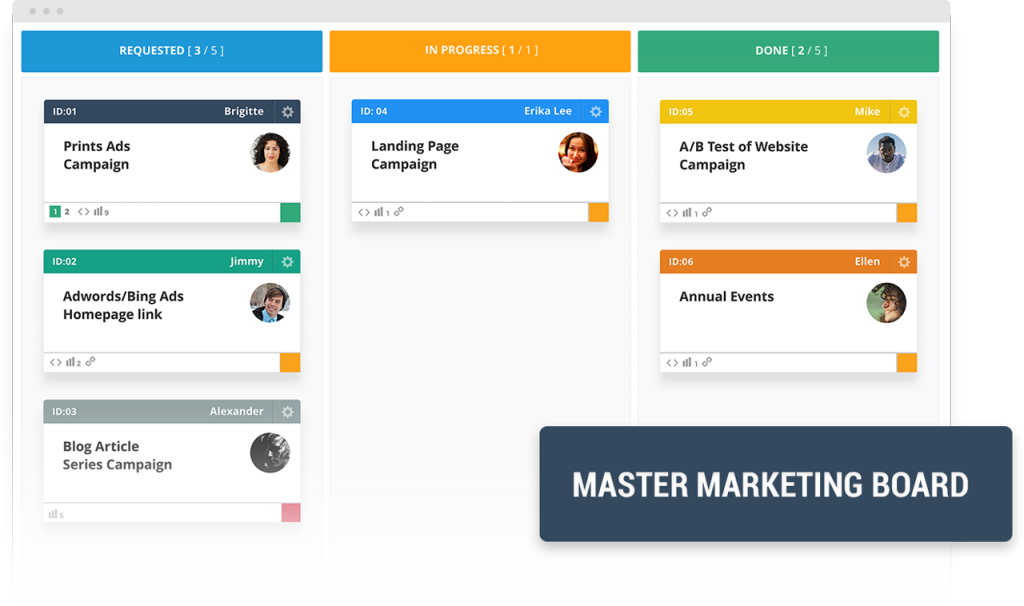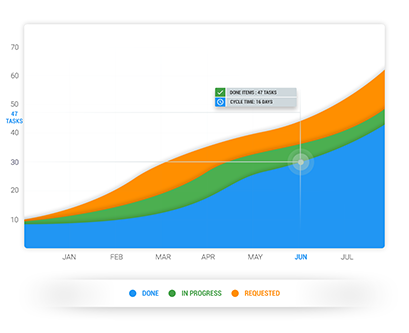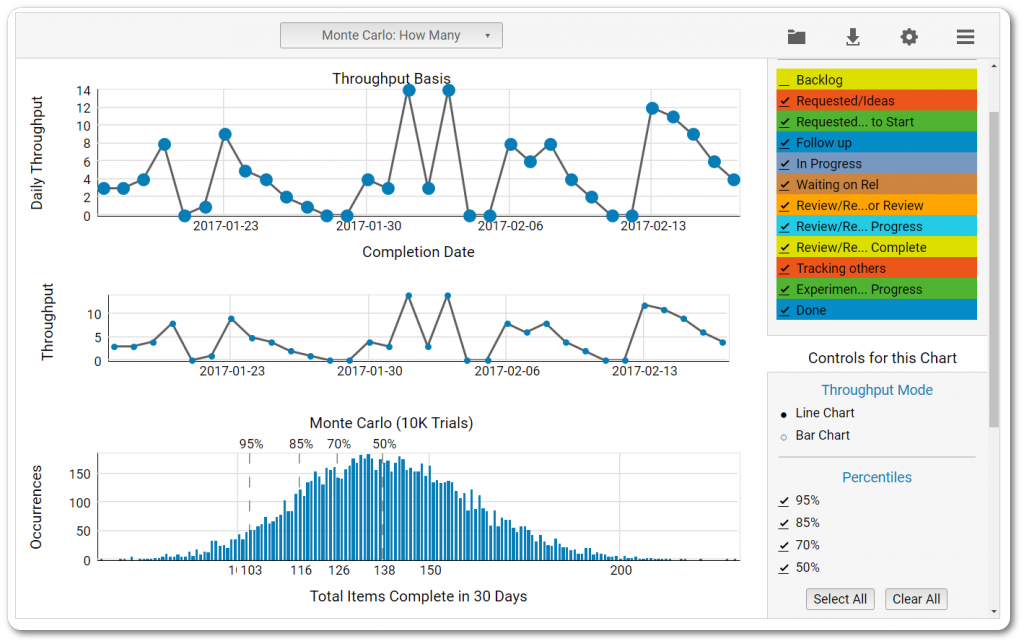Marketing is transforming. It's becoming more and more important, more tech-oriented, unfolds in more and more fields and is more integrated than ever with other departments.
Daily work in marketing is so diverse (pretty much why we love it) and dynamic it depends on external parties - agencies, partners, consultants - that it is almost impossible for most teams to organize activities and campaigns within reasonable and predictable time frames.
Now, we know marketing needs a new styling that matches its powerful personality - a way to increase efficiency and to turn expedite large projects into easy to monitor tasks.
Well, here it is - the Lean marketing framework.
First, What Is Lean?
The philosophy of Lean management originates from Toyota's Manufacturing System (TMS), also known as the Toyota Way. Because of the enormous success, later the concept was implemented by the American automobile manufacturers. For many years it was reserved for companies that were involved in the manufacturing of goods and products, and only about a decade ago, Eric Ries began a series of experiments based on the lean concept.
In his book "The Lean Startup," Eric gives a more rigorous explanation of how these concepts helped him build IMVU - a platform for virtual avatars. According to different Lean resources, at its core, the idea behind Lean methodology is acting faster, iterating more frequently, and deliver value without wasting time and resources. Lean's primary usage used to be in the manufacturing and now the software development industry, but I'm confident that it has its place in Marketing as well.
What Is Lean Marketing?
Recently, Lean marketing has started to become popular and for a reason! Most marketers constantly change priorities and focus because of the nature of their job, the dynamic landscape of our profession doesn't ease the situation. We are definitely in need of a framework to help us work more efficiently while not messing up our creative process.
The lean marketing framework is primarily focused on iteration, testing, and measurement as they are the core tenants of the Lean methodology. It allows for flexibility, and smooth coordination with other departments, such as sales, PR, or partnerships, and gives incredible simplification of complex projects.'Transformation' may sound like a tough and time-consuming activity for many. However, following the Kanban method and its principles, will guide your process to a healthy flow within a few days. However, it will require the discipline and desire for improvement of your team.
Now, you may think that the Lean marketing framework is the popular model Acquisition >> Activation >> Retention >> Referral and Revenue, which is partly true. However, what makes a marketing team lean is the way it works and the way it measures.
Lean marketing strategy is the solution to immeasurable results. We all know that if you can't measure it, you can't improve it, and now we have the opportunity to make our process a tool allowing us to influence results due to empirical data and scientific analysis. Guessing and estimating are replaced by data-driven analysis and measurable outcomes.
What Makes the Lean Marketing Framework Different from Traditional Marketing?
In traditional marketing, the final product is determined in the marketing strategy or plan beforehand, and teams can't adjust and adapt throughout the creation process. Sometimes, marketing specialists start to repeat certain activities until the end of time without measuring success regularly. Customers' interest is not constant, and they often disengage, pushed away by not precisely targeted personalized or creative messages.
Here lies the most valuable cornerstone of Lean - continuous improvement, testing and learning more, never taking a good trend for granted and always seeking perfection.
To put it in practice, Lean marketing relies on the following key points:
- Deliver faster. Break large, long-term deliverables into small tasks; deliver small pieces every few weeks and iterate toward an optimal solution. Fast is always better than slow. When limiting your work in progress, you start working on smaller batches, and because of that, you can see the fruits of your work faster. With that, you'll be able to test them faster and launch them faster if we are talking in the context of a marketing campaign. The other aspect of fast is fast iterations. One of the core concepts of Eric Ries's movement is the Build>> Measure>> Learn cycle. By iterating multiple times, you can dramatically improve every cycle compared to the previous one.
- Frequent status meetings (feedback loops) to discuss what's working, what's done, and what's keeping your team from doing more. You can start with daily stand-up meetings - this is a short (at best up to 15 minutes) gathering of the team which is held every day to sync what is happening between the team members by keeping them on the same page. Every member must share: what they have done the day before, what they will do this day and what are the challenges they have faced or think will face. The daily stand-ups are an essential part of turning your marketing team into a Lean machine. Besides helping your team always be in sync, they also help you find and resolve members' challenges before they turn into problems. One of the most valuable sides of the daily stand-ups is that they help you enable the culture of peer-to-peer learning, so crucial for every organization to success.
- Stay focused. The Lean marketing strategy encourages people to be focused and work on single tasks. Multitasking is a taboo here because it only lowers productivity levels. Focus is a key ingredient of Lean, and by using Kanban, you can enhance it even further. If you have to work on two tasks and you tackle them one-by-one, you will finish them way faster than if you are doing them simultaneously. This is why multitasking doesn't work! Well, in real life, the picture is a bit different, especially if you are dealing with people. There is always something more important, so in the end, you have to switch between multiple tasks, but this doesn't mean you can't optimize the process. Continuous improvement. Remember? By limiting the work in progress, you can easily minimize the context switching and by that finish things faster and faster.
- Don't absolutize your plan. Eisenhower said that "Plans are nothing; planning is everything." and this is absolutely the case here. Plans are handy because they show North for the team but being Lean is about being flexible, so you have to find the right balance between following a given plan blindly and discharging it completely. In the context of Eric Ries's methodology, this is called "pivoting." The decision whether you should pivot or preserve your current state must be backed up by data and not be the result of impulsive urge.
Elements of a Lean Marketing Strategy
Okay. We call it a strategy because switching to a Lean marketing process is a strategic move that will completely change the way your team works.
There are a few elements typical of Lean marketing. Knowing them at the beginning will allow you to apply them more easily to the current flow of your process. Without any frustrating changes, Lean advises you to start with what you do now. Work with what you have and gradually build upon it.
- Personas. Identify who you are trying to engage with. This eliminates the chances of participating in wasteful communications that are not targeted.
- A marketing process that upholds analytics and iteration.
- Measurement. Web or app analytics that can measure behaviors and interactions.
- Testing and measurement tools. Marketing process automation, A/B testing, and lifecycle tracking to test and validate communications, design, and ideas.
- A refined approval process for publishing and launching. Lean marketing is always iterative. Build small ideas, take them to the market, measure results, learn, and repeat using the lessons learned.
How to Get Started with Lean Marketing?
The decision to go Lean has to be a collective commitment to pursue an incremental change. It has to be discussed and mutually agreed in to order to obtain the best results. The next step is to set regular feedback loops - a daily stand-up meeting, weekly KPI meetings, and monthly strategy meetings. They need to be short with a clear agenda and followed by specific action items. With Lean, the change happens mostly as people's mindsets are adjusted.
The easiest way to apply the Lean principles to your process is the Kanban method. Kanban pursues small incremental changes and is easy to overlay. It adds practical steps to follow and the tools to use. Visualizing all the work on a Kanban board allows you to see where the bottlenecks of your process are and follow how every task is progressing from Requested toward Done. You have the original physical whiteboard with cards, and now, there are the online Kanban boards, which make it very easy to begin kanbanizing your workflow.
Kanbanize by Businessmap, for example, is one of the best Lean/Agile PPM platforms Kanban software tools that entirely apply Kanban to your marketing initiatives. It expands every Kanban principle to make the most of it in terms of visualization, WIP limits application, task prioritization, roles distribution, and flow analysis. The Portfolio lane allows you to track large campaigns in time easily and follow each task's progression. This could save a lot of time for management that is usually not involved in a particular project on a daily basis.
Marketing teams are always communicating and coordinating activities with other departments or external parties such as partners, agencies, etc. and most of the information is transferred via e-mail. Online Kanban boards allow you to integrate your e-mails and other systems to import and track all tasks at the same time. It is a good idea to ensure nothing is behind schedule by adding deadlines to cards and setting reminders through the Business rules engine.
 Example of a Lean marketing board
Example of a Lean marketing board
Lean Marketing Success Metrics to Monitor
If you are not sure what indicators you should track, here are the top four lean metrics you need to measure to ensure success:
- Process Efficiency - the ratio between the time a work item just sits there after being started and the time spent actively working on it after starting it.
- Cycle Time - is the time it takes your tasks to reach the done state.
- Throughput - the number of work items that exit your system in a given time frame.
- WIP - the number of work items that are considered in progress at a given or past time or time frame.
The tools you can use to monitor them include the favorite of many Lean practitioners cumulative flow diagram (or simply referred to as CFD). It offers a concise visualization of the three metrics of flow - cycle time, throughput, and WIP. The cumulative flow diagram can synthesize great amounts of information and present them in a readable way by just a glance.
 Example cumulative flow diagram
Example cumulative flow diagram
Another extremely useful addition to your analytics arsenal is the predictive Monte Carlo simulations. They can estimate how many work items you could produce for a certain period or when several tasks will be done. Probability distributions are a realistic and statistically reliable way of describing uncertainty in variables of a risk analysis. They enable you to make data-driven decisions together with your team and your stakeholders. This allows for deadlines in marketing teams to be based on probability as opposed to wishful thinking. 
What to Expect Within the First 3 Months?
- Enhanced communication and no more, "he said, she said," as all the data is on the board.
- No more information loss.
- Remote team members are more included in the work process and take on more initiative and responsibility.
- Encouraged knowledge-sharing for the sake of continuous improvement.
- Substantially increased efficiency.
The Lean Marketing transformation has already started, and results are proving that the trend will continue.

Bisser Ivanov
Co-founder and COO
Keen on innovation, exploration or simply trying new things. Would that be a technology, new methodology or just cool gadgets. Got almost 2 decades of experience working as a software engineer, team lead, QA/ processes manager and managing director in mid-size and large-scale software companies: ProSyst, SAP, Software AG.



